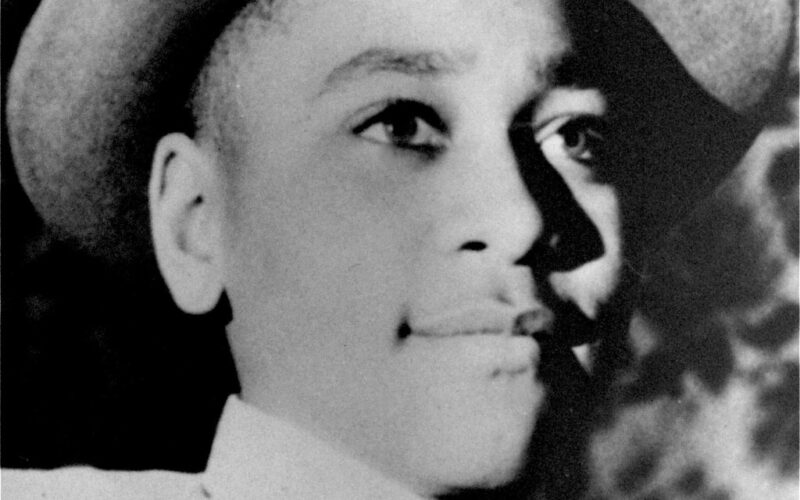Today marks the 70th anniversary of a historic lynching that still shocks us when we think about it.
The victim of the lynching was Emmett Till, a 14-year-old Black teenager from Chicago, who on Aug. 28, 1955 was visiting relatives in rural Money, Miss. In a state with more than 500 recorded lynchings of Black men between 1882 and 1968, the two white men who killed Till were sure they could get away with his murder. They made no effort to conceal their identities when they abducted him.
What made Emmett Till’s case different was that, by virtue of his age and his mother’s efforts, his lynching became a nationwide story.
pitts-till-20220403
(Chicago Tribune file photo/TNS) Emmett Louis Till, 14, with his mother, Mamie Till-Mobley, at home in Chicago.
In the summer of 1955, Till had no clear sense of the racial mores of the Deep South. When he and a group of friends stopped at the white-owned store of Roy and Carolyn Bryant to buy candy, Till acted as if he were still in the North. According to his cousin, who later became a minister, Till gave Carolyn Bryant a wolf whistle. According to her court testimony, he gripped her hand and called her “baby.”
Years later Carolyn Bryant would disavow much of what she had said in her sworn testimony, but the story she told her husband and his half-brother, J.W. Milam, was enough to infuriate them. In going after Till, they saw themselves avenging an assault on the honor of their families. Early Sunday morning, four days after Till’s Wednesday encounter with Carolyn Bryant, the two men showed up at the house where he was staying with his great uncle and took him away.

AP
In this Sept. 22. 1955 photo, Carolyn Bryant rests her head on her husband Roy Bryant’s shoulder after she testified in Emmett Till murder court case in Sumner, Miss.
Soon after, Till’s body was found in the nearby Tallahatchie River. He had been wrapped in barbed wire and weighted down with a heavy cotton gin fan to keep from his body from floating to the surface.
A Mississippi jury refused to convict Bryant and Milam of the murder, and after being acquitted, they told the story of killing Till to reporter William Bradford Huie, who paid them a fee for the information. Huie’s story caused a sensation when it appeared in the January 1956 issue of Look magazine, and since then, Till’s lynching has been the subject of numerous accounts. As late as 2005, the FBI would exhume his body and perform the first official autopsy of him.
Emmett Till
Chicago Sun-Times/Chicago Sun-Times via AP Mamie Till Mobley, Emmett’s mother, weeps at her son’s funeral on Sept. 6, 1955, in Chicago. She insisted that her son’s body be displayed in an open casket forcing the nation to see the brutality directed at Blacks in the South at the time.
But the real credit for preserving the Emmett Till story belongs to his mother, Mamie Till-Mobley, who in 2003 with the aid of Christopher Benson, a Chicago-based writer and lawyer, completed her memoir, “Death of Innocence,” which was published posthumously.
After her son’s body was returned to Chicago for burial, Mamie Till-Mobley made the decision to have him lie in an open casket. “Let the people see what they did to my boy,” she declared. What people saw, as the Chicago Sun-Times pointed out, was far worse than reported in the dispatches from Mississippi. Till’s teeth were knocked out, and the right side of his face was caved in.
An estimated 50,000 people viewed Till’s body while he was lying in state in Chicago, and across the nation many more saw the news photo, first published in Jet magazine, of Till in his casket.
Mamie Till-Mobley, who after the death of her son earned a master’s degree from Loyola University of Chicago and served as a teacher in the Chicago public schools for 23 years, never gained the fame of such contemporaries as Martin Luther King Jr. and Rosa Parks, but her impact on the civil rights movement has been enduring.

Civil rights icon John Lewis, among others, recognized the importance of Mamie Till-Mobley’s decision to share her grief rather than keep it to herself. At a November 2014 ceremony on the Capitol grounds in Washington, he joined a group of political figures, who included Barack Obama’s attorney general, Eric Holder, in planting a tree to honor Emmett Till not far from a tree planted to memorialize another youthful martyr, Anne Frank.
Today, at a time when President Trump has criticized the Smithsonian Institute’s National Museum of African-American History and Culture for promoting programs that “divide Americans based on race,” and accused the Smithsonian’s leadership of trying “to rewrite our nation’s history,” Lewis’s belief in the need to remember Till has only grown more important. Lewis reminds us that, if we are to have honest conversations about racial issues in the present, we cannot forget the racial violence of our recent past.
Mills is chair of the literature department at Sarah Lawrence College and author of “Like a Holy Crusade: Mississippi 1964 –The Turning of the Civil Rights Movement in America.”








